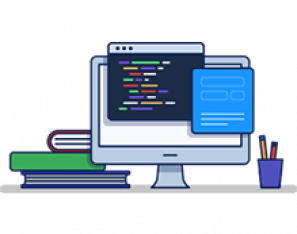We create Digital workers
Business Process Automation
Business automation saves a lot of time and money. We use Robotic Process Automation (RPA) and Artificial Intelligence (AI) to setup the automation environment.

Analyze Business
We analyze every business and build an RPA environment.
01

Find out routine tasks
We propose an environment that automates routine tasks.
02

Automate the process
Completes the tasks without human intervention.
03

Analyze Business
We analyze every business and build an RPA environment.
01

Find out routine tasks
We propose an environment that automates routine tasks.
02

Automate the process
Completes the tasks without human intervention.
03

Analyze Business
We analyze every business and build an RPA environment.
01

Find out routine tasks
We propose an environment that automates routine tasks.
02

Automate the process
Completes the tasks without human intervention.
03
Robotic Process Automation (RPA)
Business process automation technology
Robotic process automation (or RPA) is a form of business process automation technology based on metaphorical software robots (bots) or on artificial intelligence (AI)/digital workers. It is sometimes referred to as software robotics.
In traditional workflow automation tools, a software developer produces a list of actions to automate a task and interface to the back-end system using internal application programming interfaces (APIs) or dedicated scripting language. In contrast, RPA systems develop the action list by watching the user perform that task in the application’s graphical user interface (GUI), and then perform the automation by repeating those tasks directly in the GUI. This can lower the barrier to use of automation in products that might not otherwise feature APIs for this purpose.
RPA tools have strong technical similarities to graphical user interface testing tools. These tools also automate interactions with the GUI, and often do so by repeating a set of demonstration actions performed by a user.
Robotic process automation 2.0, often referred to as “unassisted RPA” or RPAAI, is the next generation of RPA related technologies. Technological advancements and improvements around artificial intelligence technologies are making it easier for businesses to take advantage of the benefits of RPA without dedicating a large budget for development work.
The typical benefits of robotic automation include reduced cost; increased speed, accuracy, and consistency; improved quality and scalability of production. Automation can also provide extra security, especially for sensitive data and financial services.
Reduced Cost
80%
Increased speed, accuracy and consistency
100%
Improved quality and scalability of production
90%
RPA actual deployment

Banking and Finance Process Automation

Mortgage and Lending Process

Customer Care Automation

eCommerce Merchandising Operation

OCR Application
